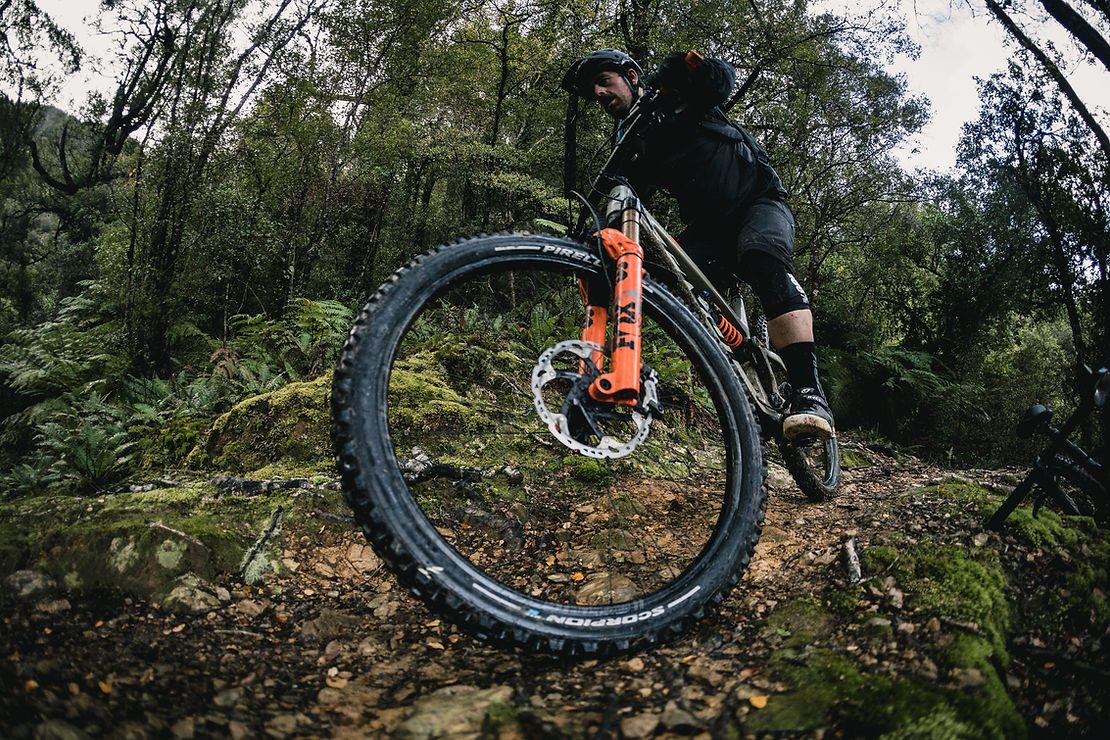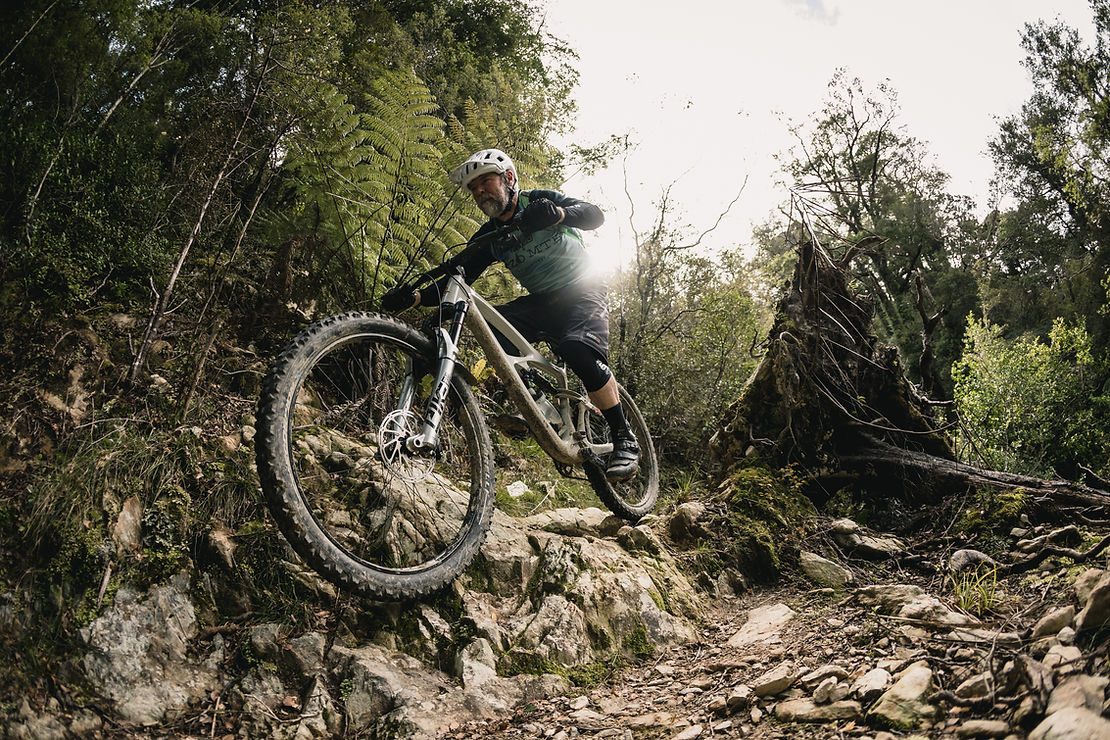Read Part 1 here.
I was happily surprised with the way the Pirellis handled things. The front end didn’t flinch, the bike heading straight where I pointed it. Any deviation was my fault. By halfway down I was feeling pretty confident, and the biggest root tangle was successfully navigated, delivering me to the small shelf I was hoping to get to, avoiding a slither into the quagmire that is the low-line on the trail. I ducked out of the trail and headed back up the hill, to take a run through the glorious Tuhoto Ariki, three kilometres or so of similar country, with a decent climb in the middle. The climb has a few sections that require your rubber to provide a firm grasp of the planet. Once again, no worries at all. I couldn’t get the rear tyre to let go. Near the end of the ride, I took a detour to an old section of trail that climbs steeply up a 50-metre straight. It would be an eye-watering climb without the tangle of pine tree roots that crisscross the surface. They are at a variety of angles, and feature a variety of height above the dirt – if I am fresh and feeling my oats I can get to the top about eight times out of ten, but that’s when it’s dry. I have to approach it in a series of tacks, slowing almost to a standstill between tricky bits to avoid passing out. How did we go? Very well, thank you. Once again, the front end was sure footed and the rear tyre provided drive with zero slippage.

Within 24 hours the trails were gold. Dry trails in a Whakarewarewa winter are about as good as dirt gets. I expected the wide open spacing of the front tread to be a liability but was actually amazed by the grip. I am not the fastest thing in the woods by any stretch, but it is all relative and at my version of warp speed the Pirellis were very impressive. I had dropped the pressure a little more, to around 17psi on the digital gauge, and that is where the tyres really started to shine.
The Trail tyre range has a beefy sidewall reinforcement to prevent the tyres from changing their shape as they are tipped over. The round profile gives a firm grip even when leaning hard, and a turn delivers a pleasant buzz of rubber grappling with the surface.

For the final round of testing, we were lucky enough to be able to evaluate a 27.5 X 2.6 set of Pirellis on a different bike, this time an Ibis Mojo 4, and on foreign country, three days in the Marlborough Sounds. Over the next three days we rode on just about every conceivable surface: the Queen Charlotte Track has loose rock, hardpacked clay (both dry and wet), mud, regular dirt, and grass. The trails to Nydia Bay and beyond featured rock, big lumps of loose rock, smaller lumps of same, the muscular wild cousins of the tame roots we have up north, and all manner of dirt – as well as hefty helping of pine needle carpet for dessert. If you want a long weekend to test tyres, you will struggle to find a better venue.

I went directly to a low pressure setting, and pretty much stopped thinking about tyres. Complete confidence was achieved on the first climb (loose, fairly small bits of rock) and subsequent descent (similar, with some hard packed clay and junior roots).
We had mercifully trouble-free rides, I had one crash which had nothing whatsoever to do with the tyres, and no flats on trail that must have claimed some scalps. If you are looking for burly tyres that do their job with minimal fuss, give the Pirelli Scorpions a go.
Pirelli Store Locater is here
Words: Gary Sullivan
Images: Cameron Mackenzie

